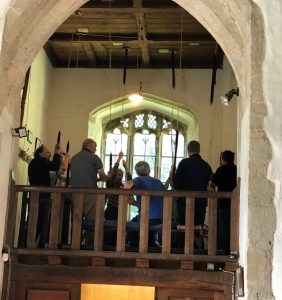It was a lovely sunny blue sky day in the South Oxfordshire village of Checkendon when a group of keen belfry maintenance personnel met up in the grounds of St Peter and St Paul. Carrying timber wheels, bells, clappers and headstocks, along with tool bags and overalls – it can only mean one thing… – the day had arrived for the much awaited Towers and Belfry Maintenance day! For me it was my first time at such an event and as a newly appointed apprentice steeple keeper of Shrivenham and Longcot Towers, I was keen to learn!
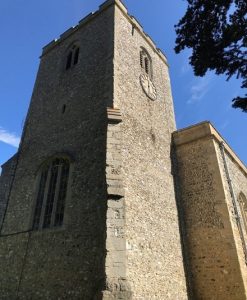
After introductory coffee/tea and biscuits and a welcome from Anthony Williamson – T&B Secretary, the day started with a few words of thanks and encouragement from Katie Lane; Guild Master.
Tony Crabtree then provided an introduction of the day, followed by Len Palfrey who gave an interesting presentation and facilitated discussion regarding health and safety essentials within a church tower. This included undertaking and documenting risk assessments and showing what a belfry maintenance persons tool kit should consist of – top of the list being a decent head torch! We then broke off into groups where we had lively and enthusiastic discussion about issues in our own towers and some useful suggestion to remedy certain issues.
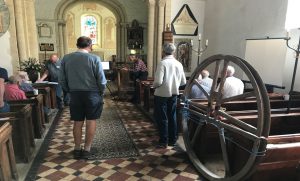
Next we took to the ringing chamber to get a feel of the bells we were going to assess. Raising the bells, ringing, then lowering gave us the chance to assess for any odd struckness, flighty rope drops, sound problems etc. After this we split up into two groups – one group looking at the wheels, ropes and bell gear brought into the church and the other group went into the belfry. The group entering the belfry seemed much larger in numbers and I did wonder if we were going for a record of how many people we could safely house within a belfry. We entered the belfry armed with our assessment sheets which guided us through the standard maintenance of a tower bell, focusing on all the vital components such as headstock, bearings, clapper, stay, slider, wheel, pulleys and of course, the bell frame. We had opportunity to witness a bell being rung whilst tied and understand the moving parts. During the belfry inspection we managed to put our assessment documents to good use and identified a few issues such as a few loose clappers, and a wearing rope which were duly reported. Tony Crabtree had also spotted some odd struckness on the 4th and using the “Twiddle Pins” demonstrated how to improve this.
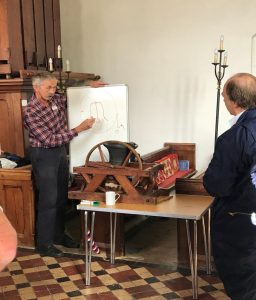
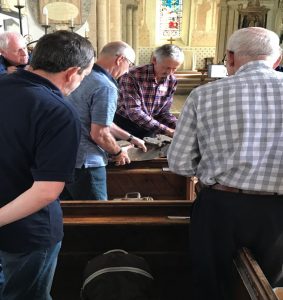
I really enjoyed the day and have since joined the T&B committee. The useful balance of theory and practical application provided for me an insight to the mechanisms of ringing and an understanding of how a bell works. This, combined with how it feels and rings and then linked with guided assessment provides much more depth and the ability to sort out issues which can improve the experience for the ringer and reduce risks of parts falling off or breaking and the associated damage. We all left with new knowledge and some useful course materials and a maintenance schedule.
